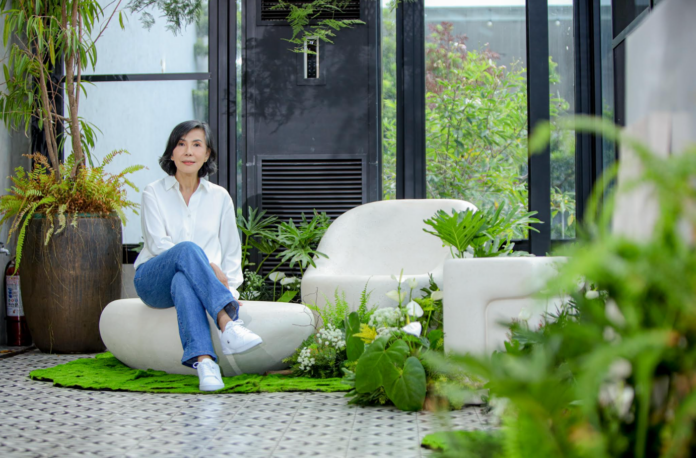How designer Shirley Dy finds art in tragedy
Thirty years ago, the eruption of Mount Pinatubo blanketed Central Luzon in ash and uncertainty about how to start again.
For Shirley Dy, it was the beginning of a bold, unexpected, yet creative journey—transforming volcanic ruin into globally recognized design. Recalling the first time she stared down the aftermath of the eruption on her husband’s devastated farmland, Shirley decided to rise again from the tragedy brought by the natural calamity.
“I said, let me create something from this to something. Nobody believed me,” said Shirley.
Now known for her elegant and minimalist furniture and accessories made from volcanic ash, Shirley shared that she didn’t start in design. A business graduate and former financial analyst at Equitable Bank, she left the corporate world in the mid-1980s to pursue fashion, with no formal training in art or design.
“The hardest part was convincing my boss. I had no fine arts background. I told her: I’m not a fashion designer. I’m a good clothes designer. There’s a difference,” she shared.
Her emphasis on designing for the wearer, not for trends, won her six months to prove herself. She needed only three. Within a year, Shirley was outselling her colleagues, many of whom held degrees from the country’s top universities. It wasn’t long before she founded her own brand and spent five years in fashion before stepping away to start a family.
Motherhood didn’t dim her entrepreneurial spark. Instead, it pivoted her focus to “hard lines”—furniture, home accessories, and sculptural objects.
“When you design clothes, you’re only responsible for the person wearing them. But with home design, it’s the whole family—the father, the mother, and the kids. That’s a bigger challenge,” Shirley explained.
The 1991 Pinatubo eruption changed everything again.
“There was ash everywhere. My first thought was, what can I do with this?” she recalled.
While the rest of the region looked to clean up, Shirley experimented. She sculpted, refined, and shaped ash into décor, but she knew that the market wasn’t ready for designs like hers.
“For four years, nobody wanted to talk to me. They didn’t think it had commercial value,” Shirley said.
Then came a break when a major French catalog featured her ash-based work. From that moment, her pieces gained international traction, placing her on the global design map.

Three decades later, her vision has grown into Destonos, a brand that redefines sculptural furniture. Its inaugural collection, launched this year, reflects Shirley’s core philosophy: that design is not just about form, but about meaning.
Destonos makes its debut with a powerful introduction to sculptural furniture—an evocative collection shaped by ash, spirit, and time. Rooted in reverence for nature, each piece transforms the raw chaos of volcanic ash into meditative expressions of beauty and memory.

into meditative sculptural furniture inspired by nature’s quiet resilience
“What was once chaos is now sculpture. What was destruction now becomes design,” Shirley said.
Gathered from the provinces of Pampanga, Zambales, and Bataan, the volcanic ash becomes more than just material—it becomes a metaphor.
“In every fragment of ash, there’s a trace of story, of land reshaped, of people who rebuilt, and of spirit that endured,” she continued.
The pieces are tactile mementos of the natural world, fused with sculptural elegance, deep texture, and minimalist form. Their presence invites not just admiration, but reflection. They speak the language of collective memory and quiet transformation.
“Every shape we cast, every texture we preserve, is a quiet homage to time itself. The hands of our craftsmen carry the gestures of those who came before, merging generations of regional knowledge with contemporary vision,” added Douglas Dy, Shirley’s co-founder and husband.
“Design isn’t about expressing yourself. An artist creates for themselves. A designer creates for others,” Shirley added.
She follows a strict “two-element” rule in her work—whether form and finish or texture and detail.
“You need people to understand it immediately. If someone has to think too hard about a piece, the message is gone,” she said.
Today, Shirley’s work stands as a testament to resilience, reinvention, and radical creativity rooted in Filipino identity. She credits a younger, more global-minded generation for her growing success at home.
“Before, the Philippines wasn’t ready for me. But millennials and Gen Z, they get it,” Shirley said.








